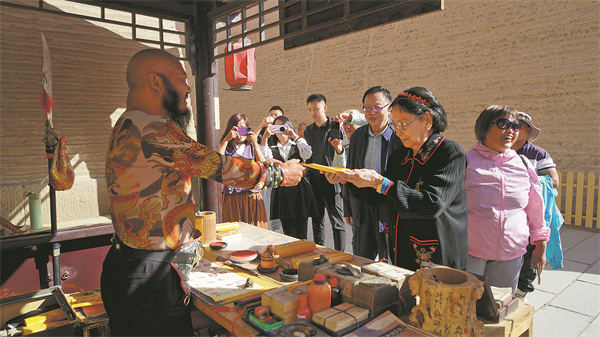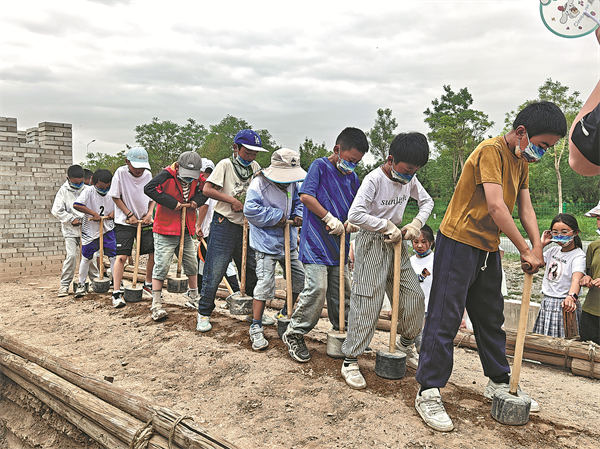'Pass'ing on Silk Road rituals


"These immersive experiences bring artifacts and history to life, allowing visitors to experience the Great Wall in a more vivid, engaging way," he says.
Last year, the number of visitors to the scenic area exceeded 3.8 million, a 41 percent increase compared to 2023. Particularly noteworthy was Aug 5 of last year, when the number of visitors reached 53,000 in a single day, setting a new record, adds Li Chenchao.
Nestled amid the stunning landscapes of the Gobi Desert and the snow-capped Qilian Mountains, Jiayuguan Pass offers breathtaking natural scenery during the day. At night, tourists can immerse themselves in the rich history through captivating light displays and performances.
"Many visitors who explore during the day choose to return in the evening to experience a different kind of scenery," Li Chenchao says.
With the growing popularity of cultural study tours among teenagers, the scenic area has designated a large space as a site for educational activities. The most popular program is the hands-on experience of building the Great Wall.
Under the guidance of teachers, participants spend an hour learning how the wall was constructed, including tasks such as sifting soil, tamping bricks and stones, and transporting materials. The entire process follows the ancient methods used in building the Great Wall.
Li Chenchao says more technologies, such as augmented reality and virtual reality, will be used next year and enhance visitor services, without causing damage to the walls and the pass, as development through preservation is of utmost importance.
"The city of Jiayuguan was established because of the ancient pass. The last general guarding the Jiayuguan Pass was named Rui Ning, and we often joke that each of us is a modern-day Rui Ning, a gatekeeper bearing the responsibility of protection," adds Li Chenchao, who grew up in the city.
According to Great Wall protection expert Niu Haipeng, the process has now entered a completely new stage, transitioning from the rescue-oriented conservation efforts of the last century to the current preventive measures. Additionally, public awareness has significantly increased.
Niu, deputy director of the Cultural Relics Management Office of the Great Wall with the Jiayuguan Great Wall Research Institute, recalls that, in the last century, some farmers would take home the sandy soil from near the Great Wall, to fertilize their fields. Now, villagers living around the wall are volunteering to patrol and protect it.

Every day, cultural heritage personnel conduct real-time monitoring of the Great Wall in the vast Gobi Desert. This includes over 43 km of the wall, as well as various passes and beacon towers.
The current damage is mainly caused by the natural environment and climate change. For example, they need to monitor humidity, wind strength, wall cracks and extreme weather conditions, such as heavy rain, in real time.
"Leveraging technology to enhance protection has also been a focus of our ongoing efforts. We use drones for monitoring and employ various instruments, such as anemometers and crack detectors. We are also collaborating with many universities and institutions to carry out digitalization of the Great Wall in Jiayuguan," says Niu.





































